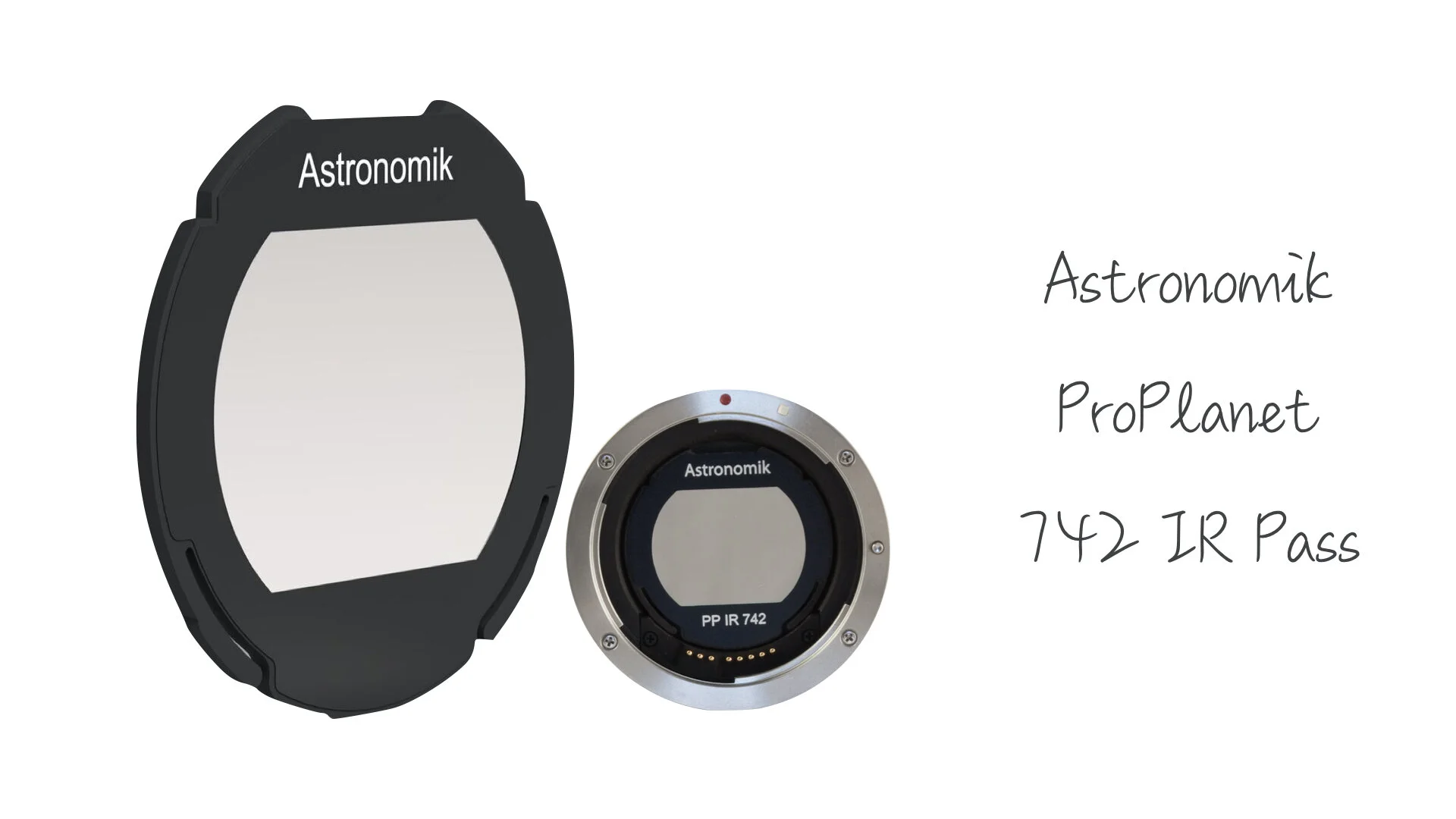
Astronomik ProPlanet 742 IR Pass
If you have to observe from light polluted sites (like most of us...), imaging with Narrowband-Emission line filters is the best way to take great images, as all kinds of light pollution can be blocked with these.
The ProPlanet IR 742 only allows infrared light with wavelengths of more than 742 nm to pass eliminating the rest of the spectrum. All other bandpasses are rejected leading to a huge improvement in the imaging of planets and the moon. The image is steadier than the image in the visible light with nearly identical exposure times.
Besides astrophotography the filter also allows for stunning results in nature photography. The filter cuts off the part of the spectrum where Chlorophyll looks green and shows its high reflectivity in the near infrared. If trees are photographed in spring and summer under blue skies you get stunning images with white trees and clouds in front of a near black background.
Bandpass
more than 96% transmission for wavelengths of 742nm to 1100nm
blocking of wavelengths between 350nm and 730nm
Visual observation (dark skies): Unsuitable, the eye is insensitive at this spectrum
Visual observation (urban skies): Unsuitable, the eye is insensitive at this spectrum
Film photography: It depends,
CCD photography: Reasonable, for special IR photography (as chlorophyll)
DSLR photography (original): Unsuitable
DSLR photography (astro modified): Unsuitable
DSLR photography (MC modified): Very good, for IR daylight photography


